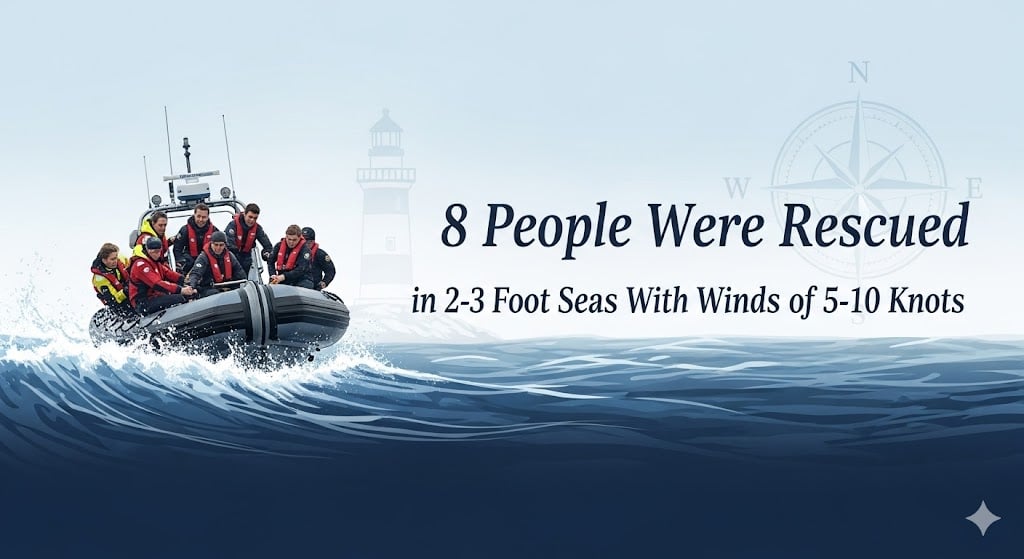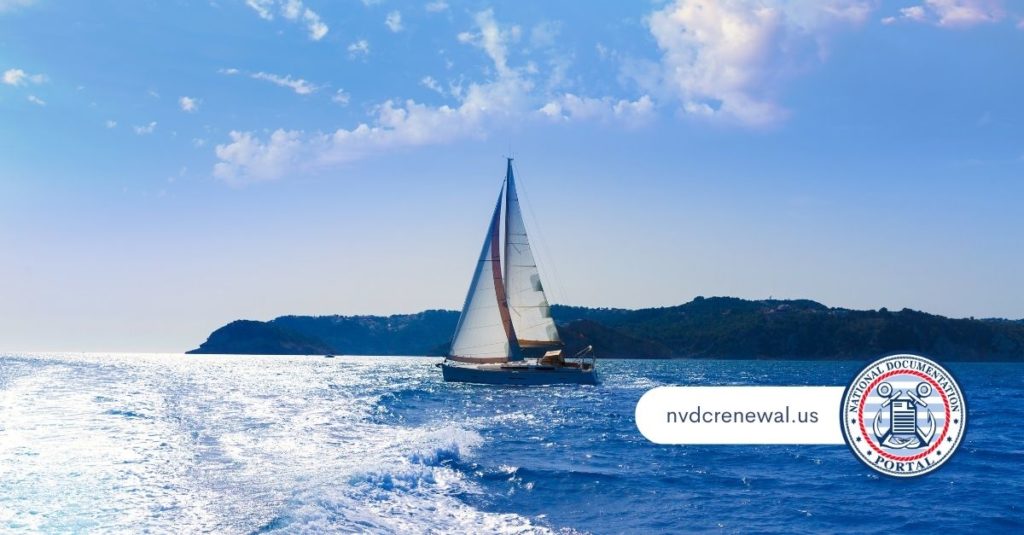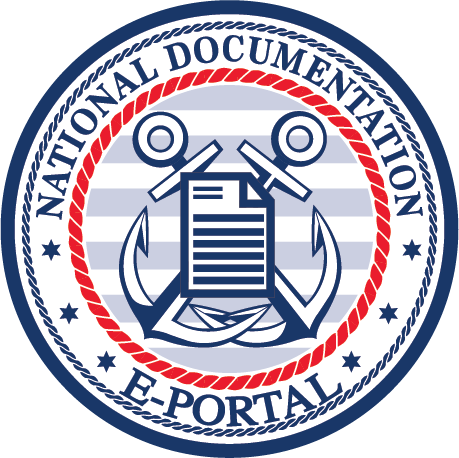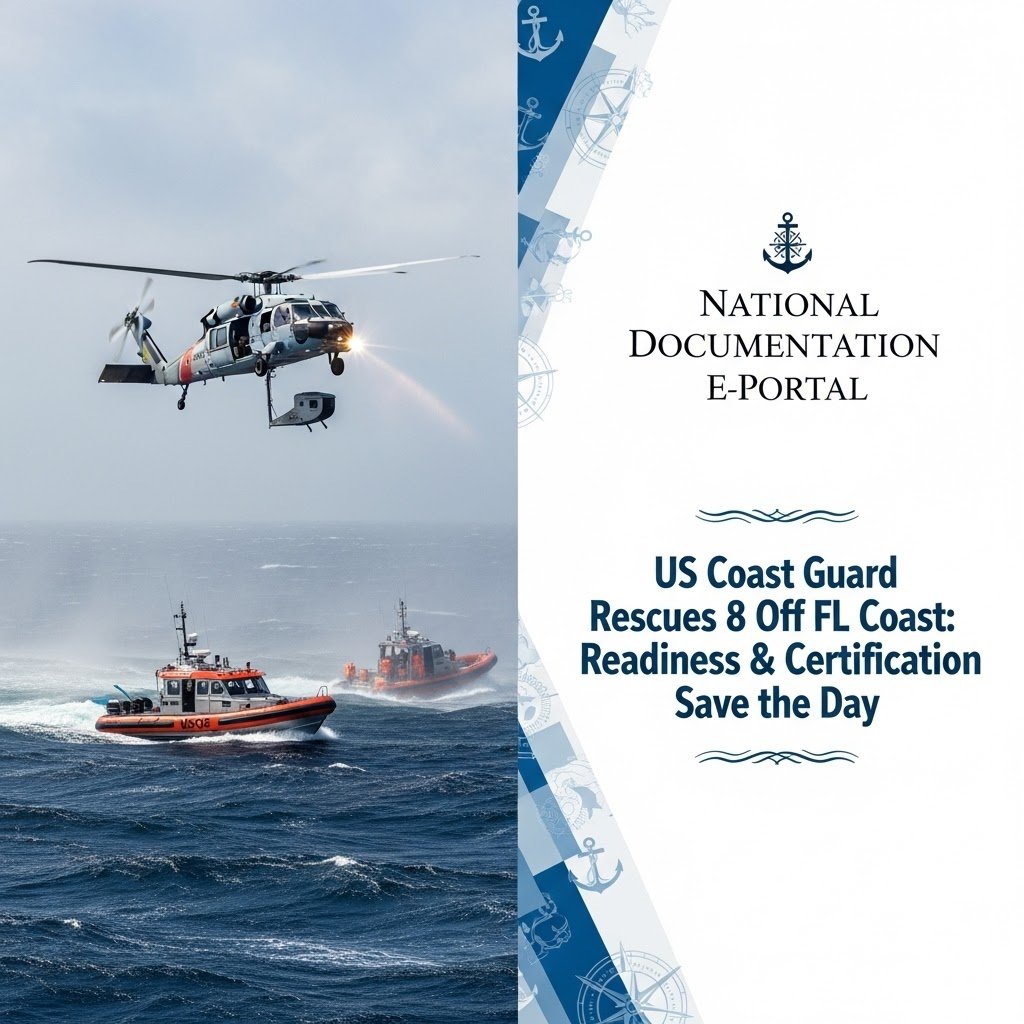Last weekend, eight boaters were rescued by the U.S. Coast Guard after their 26-foot vessel became disabled about 35 miles west of Venice, Florida. This dramatic event underscores the critical importance of US Coast Guard certification for both safety and preparedness. If you’re a vessel owner, having the right documentation—and the right mindset—can literally be lifesaving.

The Rescue: A Harrowing Night on the Water
According to a U.S. Coast Guard press release, Petty Officer 2nd Class Tyler Beasley of Station Cortez emphasized how key solid communication and lifesaving gear were to this successful recovery.
Here’s how it played out:
- An Air Station Miami HC-144 Ocean Sentry aircrew first located the stranded vessel around 9:32 p.m., braving 2–3 foot seas and winds of 5–10 knots.
- The aircrew vectored in a Coast Guard Station Cortez boat crew to make the rescue.
- The stranded boaters and their vessel were safely transported back to the Venice Inlet ramp—no injuries reported.
- The mission began when a Venice Police officer filed a report for an overdue vessel at around 1:44 p.m., alerting Coast Guard Sector St. Petersburg’s watchstanders.
This is not just a story of skill and courage—it’s a reminder of how critical readiness is when things go wrong.
What Made the Rescue Difficult
There were real challenges that night. They included:
Tough Weather Conditions
The aircrew had to operate in 2–3 foot seas and shifting winds. Even moderate conditions can make it hard to spot a disabled vessel and guide boats in for a pickup.
Long Distance & Limited Visibility
At 35 miles offshore, locating a small, disabled craft is no small feat. The aircrew had to find the vessel in the dark, then direct the boat crew precisely to its location.
Coordination Under Pressure
Rescue operations required tight coordination between sea and air units. The aircrew didn’t just spot the boat—they vectored in the cutter to make a safe transfer.
Risk to Rescuers
Boaters’ safety gear played a big role. The Coast Guard’s own recommendations came alive in this scenario: life jackets, VHF radio, signaling devices, and an emergency beacon.
Beasley put it plainly: “Tell someone where you’re going and when you plan to return.”
The Heroism of the Coast Guard
The response demonstrated operational excellence:
- Air-Sea Teamwork: The HC-144 crew spotted the vessel, maintained contact, and guided the boat team in.
- Seamless Execution: Despite darkness and distance, the transfer went smoothly with no injuries.
- Safety First: The Coast Guard’s safety guidance is never just talk—they rely on life jackets, beacons, and radios for missions like this.

How Boat Owners Can Avoid These Situations
If you own or operate a vessel, here’s how to reduce the odds of needing a rescue:
- File a float plan. Tell someone your route, when you plan to return, and how many people are aboard.
- Always carry mandatory safety gear:
- Coast Guard–approved life jackets
- VHF radio
- Signaling devices (flares, horns, etc.)
- Emergency Position Indicating Radio Beacon (EPIRB) or Personal Locator Beacon (PLB)
- Take a boating safety course. The Coast Guard Auxiliary offers them in many areas.
- Perform regular maintenance. Mechanical failure is a common cause of disabled vessels.
- Maintain proper documentation. Having your vessel properly documented means you’re more likely to communicate effectively during emergencies.
How Proper Documentation Helps
Documentation isn’t just red tape. It can make a real difference when lives are on the line.
- A certificate of documentation lookup ensures your vessel’s details are current and accessible.
- A preferred ship mortgage can help secure financing so you can have the boat you want.
- Regular documented vessel renewal keeps your paperwork valid and helps avoid administrative lapses.
At the National Documentation E-Portal, we make it simple to manage all of this. We help you:
- Apply for Coast Guard documentation
- Renew your certification
- Get clarity on required forms
Ensuring your vessel is properly documented contributes to maritime safety—and may even support the efficiency of a rescue mission if needed.

Coast Guard documents
The Role of US Coast Guard Certification
US Coast Guard certification isn’t just a regulatory burden—it’s a crucial part of the maritime safety system. Here’s why:
- Certifies your boat under the U.S. flag.
- Helps legitimize your vessel in legal and financial contexts.
- Ensures essential vessel information is up-to-date (like length, tonnage, and ownership).
- Allows you to use tools like certificate of documentation lookup and preferred ship mortgage.
In Rescue Situations
In emergencies like this one, having current certification makes it easier for:
- Authorities to identify and assist your vessel
- Rescuers to confirm ownership and vessel status
- You to avoid delays due to paperwork confusion
US Coast Guard Certification and Other Forms We Provide
We simplify documentation so you can focus on what matters—safe boating.
Our portal helps you:
- Apply for initial Coast Guard documentation
- Renew your US Coast Guard certification
- Know the facts about a boat through an abstract of title
- Access resources to verify your certificate of documentation lookup
We don’t research or track down your vessel, but we do make sure you have the tools to manage your own documentation easily.
Staying Safe on the Water: Final Reminders
- Be prepared. Always carry essential safety gear.
- Communicate your plan. File a float plan.
- Stay certified. Keep your US Coast Guard certification up-to-date through our portal.
- Invest in training. Learn what to do in emergencies.
The Coast Guard’s swift rescue of those eight mariners wasn’t just luck. It was the result of training, coordination, and preparedness. But you don’t need to hope the Coast Guard will be there—you can do your part.

